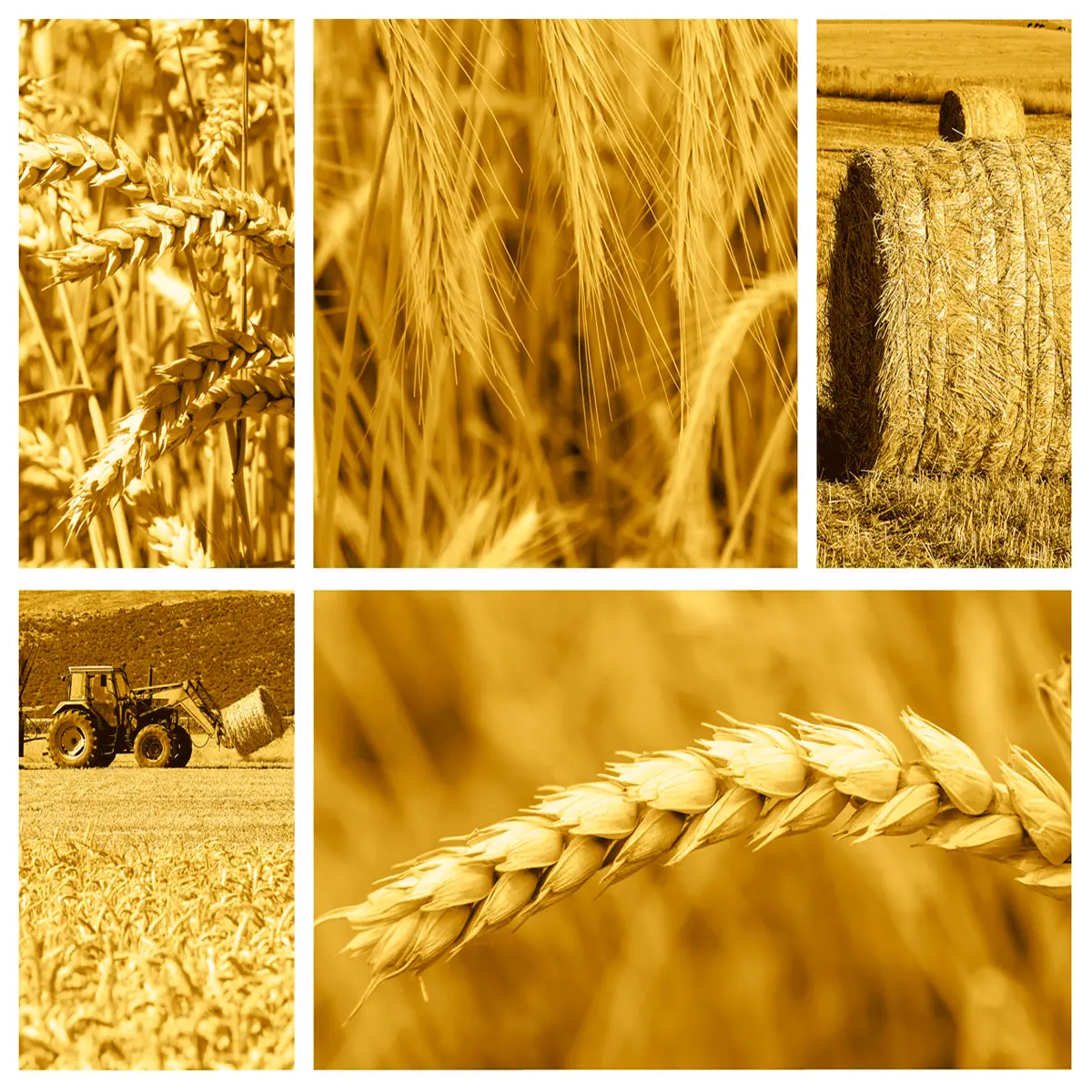
Your Guide to Success: How to Write a Farming or Agriculture Proposal
Writing a successful farming-related proposal can be challenging, but it can be entirely achievable with the right approach. This article will show you what you need to draft a winning proposal-understanding the unique requirements of your agricultural project, identifying your audience, and creating a narrative that underscores your farm's potential for success.
Key Takeaways
- Clearly identifying the type of proposal, understanding the target audience's interests, and tailoring the content accordingly are fundamental steps in creating a winning agricultural proposal.
- Providing a detailed budget, outlining a funding schedule, and demonstrating your expertise with past successes is critical to establishing credibility and convincing funders of the project's viability.
- Risk management, long-term planning, and addressing sustainable practices like organic farming are crucial components that enhance proposal appeal and align with environmental and community goals.
Understanding Farming and Agriculture Proposals
Understanding the ins and outs of proposal writing is crucial when creating a proposal for your farming or agricultural business. This involves identifying the specific type of proposal you need and recognizing your target audience.
Identifying Your Proposal Type
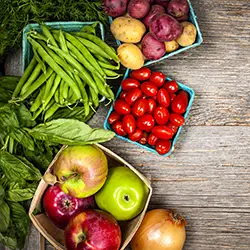
Agricultural proposals cover an extensive and varied range of topics, with each proposal type catering to distinct goals and needs of the farming or agriculture-related project. Whether you're seeking funding for a new farm business, selling agricultural products, or responding to government grants, each type of proposal brings unique objectives and requirements.
Therefore, identifying the correct type of proposal is an essential first step. This enables you to communicate your project's vision, increasing your chances of securing the necessary support or partnership. With a clear understanding of what your proposal is meant to achieve, your message may stay visible, reducing its impact.
Recognizing Your Target Audience
Knowing your audience is just as important when tailoring your proposal. Whether you are directing your proposal toward investors, grant agencies, or potential clients, it's crucial to understand their interests, priorities, and potential gains from your project's success. By clearly demonstrating how your project will directly benefit the intended audience, you can enhance the appeal and persuasiveness of your proposal.
Agricultural Proposal Use Cases
Agriculture and farming proposals can take various forms, each designed to meet specific goals and objectives. For example, a farming project proposal may aim to increase yields, adopt sustainable practices, or expand farm operations. An agriculture project could also enhance food security, foster technological innovation, or involve environmental stewardship. In this context, a farming proposal is essential to successfully securing the project to implement an agriculture project.
Here are examples of types of grants and projects for which proposals in the farming and agriculture sector may be written:
- Equipment Upgrades: Proposals for funding to purchase or lease new farming equipment to increase efficiency and productivity.
- Sustainable Agriculture Projects: Funding proposals for projects that promote sustainable farming practices, such as organic farming, permaculture, and regenerative agriculture techniques.
- Research Grants: Proposals for funding agricultural research projects on crop disease prevention, soil health, and new agricultural technologies.
- Agricultural Education and Training: Proposals for establishing or enhancing educational programs that train farmers in modern farming techniques, business management, or sustainable practices.
- Water Management Systems: Proposals for implementing or improving irrigation systems and other water management solutions to enhance water efficiency.
- Farm-to-Market Access: Funding proposals aimed at improving market access for small and medium-sized farms, including infrastructure for transportation and logistics.
- Agro-Tourism Initiatives: Proposals for creating or expanding agro-tourism, including farm visits, educational tours, and on-farm direct sales initiatives.
- Renewable Energy Projects: Proposals for integrating renewable energy sources, such as solar, wind, or biomass, into farming operations to reduce energy costs and environmental impact.
- Conservation Projects: Proposals aimed at land conservation efforts, wildlife habitat preservation, and biodiversity enhancement on farmlands.
- Agroforestry Projects: Funding proposals for integrating tree planting into agricultural practices to improve crop yields, enhance soil health, and increase carbon sequestration.
- Value-Added Product Development: Proposals for funding to develop value-added agricultural products like cheeses, preserves, or organic fertilizers, expanding market opportunities and increasing profitability.
- Pest Management Solutions: Proposals for projects focused on sustainable pest control methods that reduce reliance on chemical pesticides, including biological control techniques and integrated pest management (IPM) systems.
- Food Security Initiatives: Funding proposals for projects to increase local food production and distribution to enhance food security in underserved communities.
- Urban Farming Projects: Proposals for developing urban agriculture initiatives that use rooftops, vacant lots, and other urban spaces to grow food and provide community access to fresh produce.
- Climate Resilience Projects: Funding proposals to implement strategies that make farming practices more resilient to climate change, including drought-tolerant crops and flood-resistant farming techniques.
- Animal Husbandry Improvements: Proposals for projects that enhance livestock management practices to improve animal welfare, productivity, and sustainability.
- Genetic Research and Development: Proposals for funding genetic research into crop and livestock varieties better suited to local environments, disease resistance, and nutritional needs.
- Cooperative Development: Proposals aimed at forming or supporting agricultural cooperatives to improve buying power, market access, and shared resources among farmers.
- Agricultural Export Initiatives: Funding proposals aimed at helping farmers meet export regulations and tap into international markets, including certification and compliance projects.
- Pollinator Health Projects: Proposals for enhancing pollinator habitats and health to support crop pollination and biodiversity within agricultural systems.
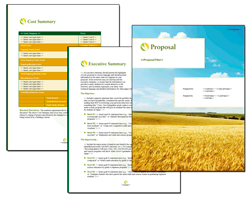
The activities outlined in the proposal can be diverse. Implementing organic farming techniques or precision agriculture technologies and integrating sustainable agriculture practices like crop rotation, integrated pest management, and water efficiency are often key components of farming proposals. Organic farming proposals, for instance, focus on ecological pest controls, soil management, and biodiversity, eliminating synthetic chemicals in favor of natural fertilizers and pesticides.
Besides the technical aspects, a proposal should contain comprehensive financial planning, marketing strategies, and well-structured business plans. This includes:
- A detailed budget for both initial and ongoing costs
- Strategies for securing business startup funding
- Market analysis
- Identifying a target audience
- Forming partnerships for distribution and outreach
Not to forget, the following are all critical for an effective proposal:
- A clear organizational structure
- Defining team roles and expertise
- Operational strategies for transparency and efficiency
- Project execution plans
Creating Your Proposal Foundation
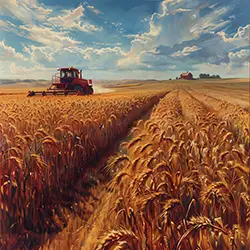
Once you've understood the proposal writing basics and envision your project's use case, it's time to create your proposal foundation. This involves conducting a thorough needs assessment and establishing clear project goals. These steps are the bedrock upon which your entire proposal will be built.
Conducting a Thorough Needs Assessment
A needs assessment is the first step in creating your proposal foundation. It provides an objective view of your farming or agricultural project's needs, bypassing subjective opinions to focus on tangible requirements. This process involves:
- Defining the assessment's purpose
- Identifying stakeholders
- Gathering existing data
- Collecting new data
- Analyzing the data to determine needs priorities
A comprehensive needs assessment utilizes both primary and secondary data sources. Here are some examples:
- Secondary data, such as the Agricultural Census, offers a broad understanding of community issues.
- Primary data collection provides deeper insights specific to your project.
- Evaluating previously funded projects can provide valuable insights for developing a successful proposal.
Establishing Clear Project Goals
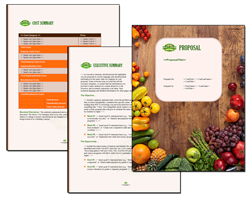
Once you've conducted a thorough needs assessment, the next step is to establish clear project goals and objectives. These serve as guideposts for your proposal, directing your efforts toward addressing food security and enhancing agricultural productivity.
Developing high-yield and cost-effective sustainable projects tailored to clients' needs is essential. This ensures that the project meets the client's specific requirements while maximizing their return on investment. Such projects significantly contribute to setting achievable and worthwhile project goals. Moreover, sustainable agriculture practices focusing on cost-effectiveness and high-yield outputs can enhance your proposal's appeal and effectiveness.
Structuring Your Agriculture Proposal
With a solid foundation laid, it's time to structure your agriculture proposal. This involves:
- Identifying the problem your project seeks to address
- Proposing a solution
- Presenting a detailed budget
- Outlining a funding schedule
Each component is crucial in creating a proposal that communicates your vision and convinces potential funders of your project's viability.
Laying Out the Problem and Proposed Solution
Identifying the main problem is the first step in writing an agricultural project proposal. By presenting a persuasive narrative highlighting an issue in the farming community, you can engage the grant reviewer's interest, making them more likely to support your project.
The proposed solution should resolve the identified agricultural issue. For instance, if the problem is price or market risk, the solution could outline strategies for pricing, selling, and delivering agricultural products. By clearly laying out the problem and a solution, your proposal can demonstrate the value and potential of your project.
Presenting a Detailed Budget and Funding Schedule
A detailed and justified budget is an essential part of your proposal. It should clearly outline the funding request with concrete figures and avoid rough estimates. This not only ensures that grant money is used wisely, but it also improves your chances of securing the grant.
Before submission, it's crucial to double-check the budget to ensure it matches the grant money requested. Overestimating funding needs or incorrect math can lead to rejection due to poor money management. You can demonstrate your project's financial feasibility and commitment to responsible financial management by presenting a detailed budget and funding schedule.
Demonstrating Expertise and Credibility
Demonstrating expertise and credibility is another crucial aspect of creating a winning proposal. This involves highlighting your team's credentials, past successes, and testimonials.
By showcasing your expertise and credibility, you can build trust with potential funders and convince them of your ability to execute the proposed project successfully.
Highlighting Team Expertise and Credentials

The success of any agricultural project hinges on the skills and expertise of the team behind it. In your proposal, it's essential to detail your team members' skills, experience, and educational qualifications, especially those in critical roles. This not only showcases your team's capability but also your commitment to sustainable agriculture practices.
Training programs using agricultural resources and other educational sources can be mentioned to demonstrate your commitment to keeping up to date with advances in farming methods. By highlighting your team's expertise and credentials, you can assure potential funders of your team's ability to execute the project successfully.
Showcasing Past Successes and Testimonials
Past successes and testimonials can be powerful tools to demonstrate your organization's track record and positive impact. By presenting individual success stories or case studies of previous projects, you can show the positive impact of your organization's efforts.
It's also beneficial to seek out examples of previously funded agriculture projects. This can inform you about the favored proposals and guide you on how to frame your proposed project for increased success. This may be possible with government RFPs as they are usually available on agency websites. Highlighting past successes and testimonials can prove your organization's capabilities and positive impact.
Risk Management and Long-Term Planning
Risk management and long-term planning are essential in ensuring an agricultural business's longevity and stability. By addressing potential risks and outlining long-term goals and impacts, you can create an agricultural proposal that convinces funders of your project's immediate feasibility and long-term viability.
Analyzing Potential Risks
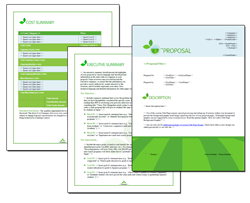
Agriculture is an industry fraught with risks, ranging from unpredictable weather conditions to volatile market prices. It's, therefore, crucial to identify and analyze potential hazards in your proposal and outline mitigation strategies for each.
Farmers face production, human, price, market, financial, and institutional risks. By outlining preventive measures, diversification strategies, marketing plans, careful financial management, and proactive policy monitoring, you can demonstrate your ability to manage these risks effectively.
Your proposal should outline mitigation strategies and discuss financial risk management. This can include using balance sheets and cash flow statements to plan for your farm's financial health. By addressing potential risks in your proposal, you can assure funders of your ability to manage and overcome challenges.
Charting Long-Term Goals and Impact
Long-term sustainability is a critical consideration in any farming or agricultural project. In your proposal, it's important to outline how your project will contribute to achieving long-term objectives, such as promoting soil health, conserving water, and providing stable long-term employment. Your proposal should also emphasize how your project will address global challenges like climate change, food insecurity, and biodiversity loss. This demonstrates your commitment to sustainable practices and aligns with many funders' environmental goals.
By charting long-term goals and impacts, you can demonstrate your project's potential to contribute to sustainable development and community well-being.
Visualizing Success: Tools and Resources
Visual aids and resources can enhance your proposal's presentation, making it more engaging and easy to understand. This includes charts, Gantt charts, and Proposal Kit's software.
Using these tools and resources effectively lets you communicate your project details more clearly and convincingly.
Using Charts and Gantt Charts for Timelines
A detailed timeline is an essential part of any agricultural proposal. It clarifies project duration, crucial for managing the budget and achieving production and market-readiness milestones. Gantt charts, in particular, can enhance proposal planning by:
- Providing a view of task dependencies
- Simplifying project management
- Increasing transparency
- Optimizing resource allocation
Gantt charts are recommended for depicting the implementation timeline and project milestones, aligning project tasks, and ensuring well-developed proposal submissions. Using Gantt charts in your project proposal can provide a clear overview, enhance understanding of project details, and support clarity in task management.
Leveraging Proposal Kit's Software
Proposal Kits are designed to assist in writing farming and agriculture proposals. They provide:
- Pre-written templates
- Samples of agriculture and farming proposals
- Graphic design options
- Automation software that can assemble a proposal to fit any agriculture or farming-related proposal
- Line-item quoting software features for estimates, quotes, budgets, and other financial pages
Leveraging Proposal Kit's software can save you time and effort, enabling you to focus more on the content of your proposal.
In addition to providing agriculture design themes, templates, and samples, Proposal Kit's products include line-item database quoting features that automate financial and schedule pages. By leveraging Proposal Kit's software, you can create a professional and convincing proposal with less effort and time.
Here are some related samples included in every Proposal Pack
Here are some related templates
Finalizing and Reviewing Your Proposal
Once you've created your proposal, finalizing and reviewing it is essential. This involves proofreading, editing, and seeking external feedback. These steps ensure your proposal is polished, error-free, and presents your project in the best possible light.
The Art of Proofreading and Editing
Proofreading is an essential step in finalizing your proposal. It ensures that your proposal strictly follows the grantor's guidelines, including accurate formatting and correct submission requirements. Additionally, eliminating grammatical and punctuation mistakes during proofreading makes your proposal clearer and easier to understand.
Conversely, editing helps eliminate redundant information and ensures consistent formatting and style throughout the proposal. Taking a break before starting the proofreading process, reading the proposal out loud, and using grammar and spell-checkers can aid in this process. You can ensure clarity, consistency, and professionalism by proofreading and editing your proposal thoroughly.
Seeking External Feedback
Seeking external feedback is another critical step in finalizing your proposal. An external review can offer fresh perspectives that could be invaluable for your proposal. This feedback can provide constructive criticism to improve future applications.
Contacting grant funders before applying can help make a personal connection and strengthen your proposal. By seeking external feedback, you can gain valuable insights and improve the overall quality of your proposal.
Additional Considerations for Farming-Related Proposals
Additional factors to consider while creating your proposal include organic farming practices and community development plans. Addressing these factors can further enhance your proposal's appeal and demonstrate your commitment to sustainable practices and community well-being.
Addressing Organic Farming and Sustainable Practices
Organic farming and sustainable practices are becoming increasingly important in the agricultural sector. Sustainable farming practices include organic materials, soil conservation, and water conservation, all of which contribute to the responsible management of natural resources. These practices significantly reduce negative environmental impacts and improve soil health and biodiversity.
Furthermore, there is a growing consumer demand for organic products, influencing farming practices and market trends. Farmers adopting organic methods can often take advantage of premium pricing and market differentiation. By addressing organic farming and sustainable practices in your proposal, you can demonstrate your commitment to environmental stewardship and attract funding.
Including Training and Community Development Plans
In addition to addressing organic farming, it's important to include training and community development plans in your farming operation proposal. Implementing training programs can ensure that both staff and community members have the proper skills and knowledge to contribute to the farming project.
Community engagement efforts in the agricultural community such as:
- Educational workshops on sustainable practices
- Monthly town hall meetings to discuss project progress
- Collaboration with local schools to foster agricultural education
You can ensure project acceptance, smooth implementation, and long-term sustainability by including training and community development plans in your proposal.
 Proposal Pack for Any Business covers this type of proposal and includes samples. There are also some commonly used specialty design themes available:
Proposal Pack for Any Business covers this type of proposal and includes samples. There are also some commonly used specialty design themes available:Photo Design Proposal Packs
Line Art Design Proposal Packs
Summary
In conclusion, creating a winning farming or agriculture proposal requires understanding how proposals are written, a solid foundation, a well-structured plan, demonstration of expertise and credibility, risk management, long-term planning, and appropriate visual aids and resources. Additionally, it's essential to consider factors such as organic farming practices and community development plans. By following these guidelines, you can create a proposal that convinces potential customers or funders to back your venture, thereby ensuring the success of your agricultural project.
Frequently Asked Questions
How to write a grant proposal for farming?
When writing a grant proposal for farming, start by identifying your project's goals and researching funders. Then, write a clear summary, explain your methods, show the impact, and provide a budget. This will help you create a proposal. If responding to a government RFP, strictly follow the RFP instructions.
What is the purpose of writing a farming or agriculture business proposal?
Writing a farming or agriculture business proposal aims to persuade potential customers or funding organizations to do business with you. It serves as a pitch for collaboration or investment.
What should be included in the final section of a business proposal?
In the final section of a business proposal, you should include a description of your company history, personnel, expertise, experience, training, referrals, testimonials, and awards. This will provide a comprehensive overview of your company's background and capabilities.
What are Proposal Packs designed for?
Proposal Packs are designed for writing farming and agriculture proposals, offering pre-written templates, samples, graphic design options, and automation software to streamline the process.
How can I demonstrate my expertise and credibility in my proposal?
You can demonstrate your expertise and credibility in your proposal by detailing your team's skills and experience, highlighting past successes and testimonials, and showcasing your commitment to sustainable agriculture practices. This will build confidence in your capabilities and trust in your proposal.



 Cart
Cart
 Are you just looking for a template, sample, or software for your agriculture proposals? Click these links to skip down the page and get right to it.
Are you just looking for a template, sample, or software for your agriculture proposals? Click these links to skip down the page and get right to it.







 Facebook
Facebook YouTube
YouTube X
X Search Site
Search Site